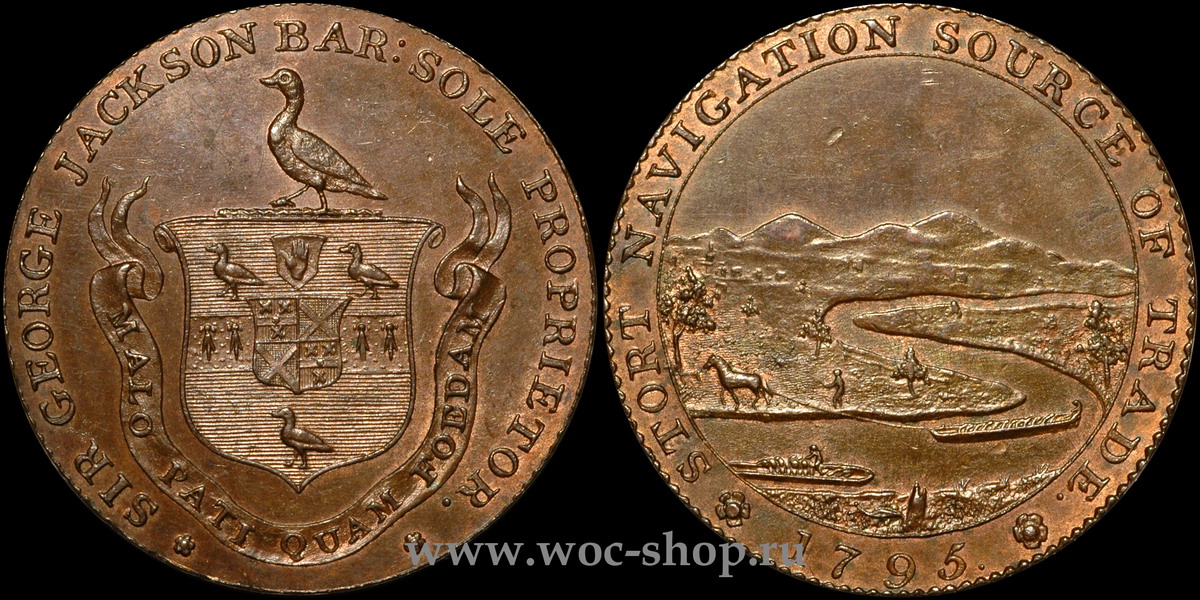
Online collections
monedastodas.com
All collections » Tokens » Stortford Halfpenny
Hertfordshire Stortford Halfpenny
A landscape showing the river Stort winding towards the distant hills / The Coat
of Arms of Sir George Jackson Duckett
Edge: «PAYABLE AT BISHOPS STORTFORD» struck in a collar
Dalton & Hamer: 4

The obverse side of the token depicts the channel of the Stort River and the hills in the background. In the foreground there is a barge floating along the canal and a horse towing another barge. The circular inscription reads "STORT NAVIGATION SOURCE OF TRADE" and the date 1795.
The reverse side shows the coat of arms of Sir George Jackson Duckett: on the azure shield there are three shelduck ducks, on the horizontal strip separating the shield there are four sprigs of lavender, in the upper part there is a hand signifying a baronet. On top is another small shield with the crosses of St. Andrew. Below the emblem is a ribbon with the Latin motto "MALO PATI QUAM FOEDAM", which means: "It is better to suffer than to be dishonored." The circular inscription reads: "SIR GEORGE JACKSON BAR: SOLE PROPRIETOR" (Sir George Jackson Baronet: Sole Proprietor).
Edge inscription: "PAYABLE AT BISHOPS STORTFORD", minted in a ring.
Stamp engraver Kuchler, manufacturer Boulton. On the token, the perspective of the channel of the Stort River is very successfully conveyed - the effect of which is quite difficult to achieve on a coin, requiring considerable skill of the engraver.
Navigation along the River Stort was permitted by an Act of Parliament of King George III (George III 1738 - 1820) and extended from the River Lea near the village of Rye to Town Mill in Bishop's Stortford. The official opening of the canal took place on October 21, 1767. The channel's sole owner, Sir George Jackson, was a naval attorney-at-law and a member of parliament. He was a friend and patron of Captain Cook, who named after George "Port Jackson" in New Zealand and New South Wales in Australia. His second wife was Grace, daughter and co-heir of George Duckett, Esq. at Hartham House in Wiltshire; In 1797, in accordance with the will of Thomas Duckett, Sir George Jackson received Royal permission for the family family coat of arms, becoming Sir George Duckett, Baronet (Sir George Duckett, Bart 1725 - 1822).